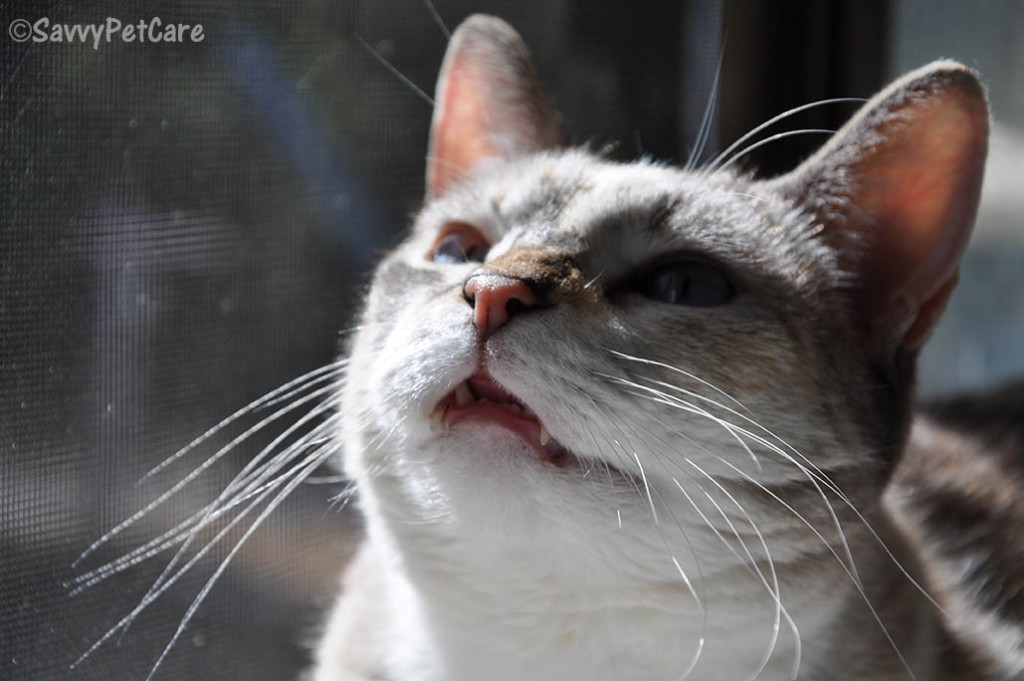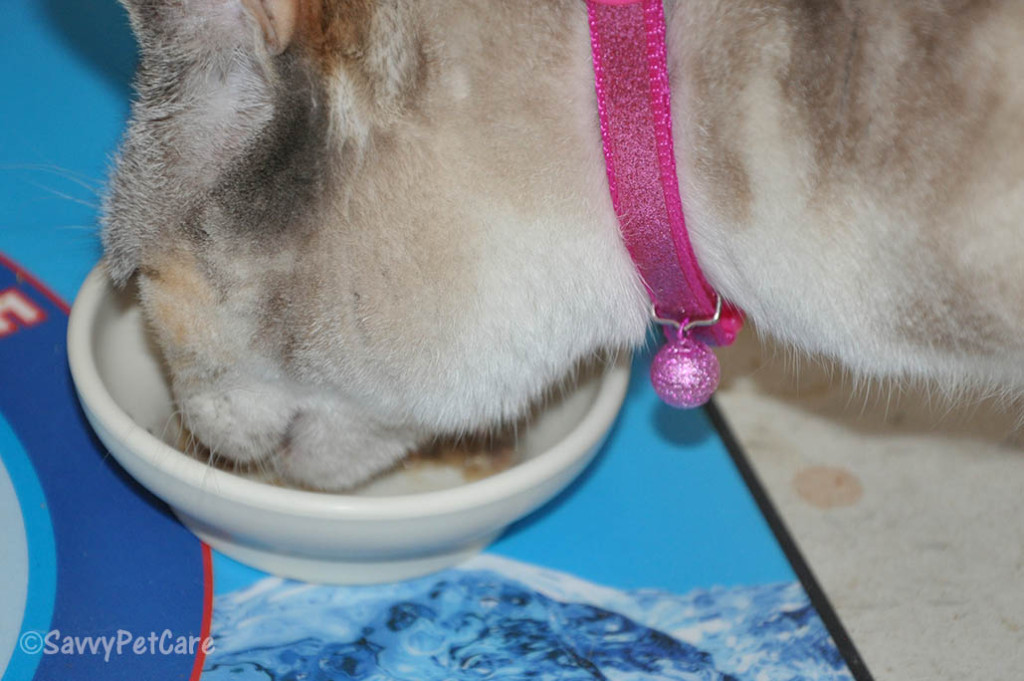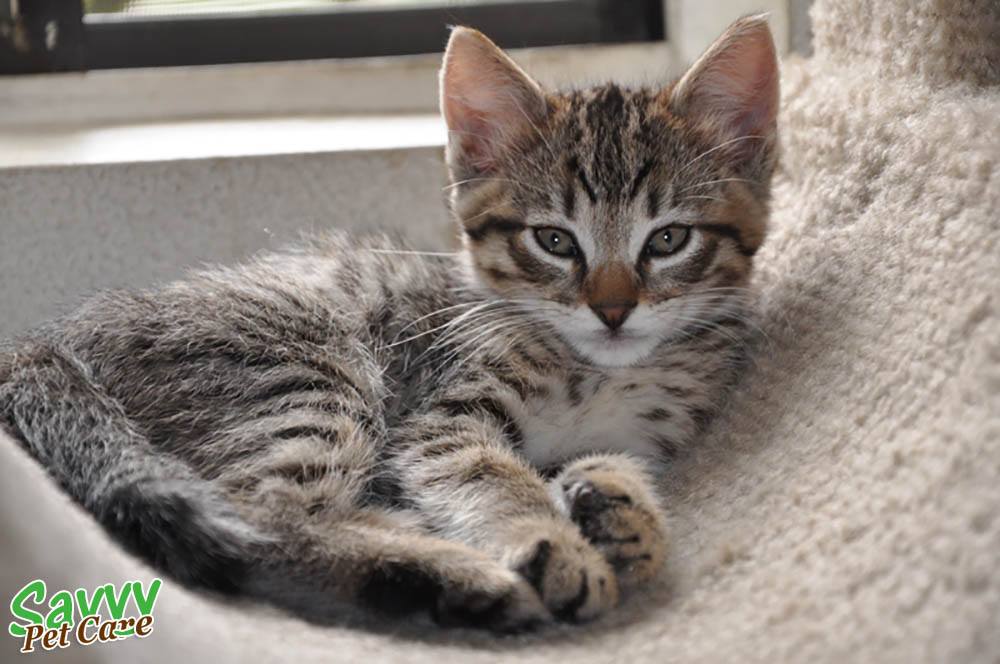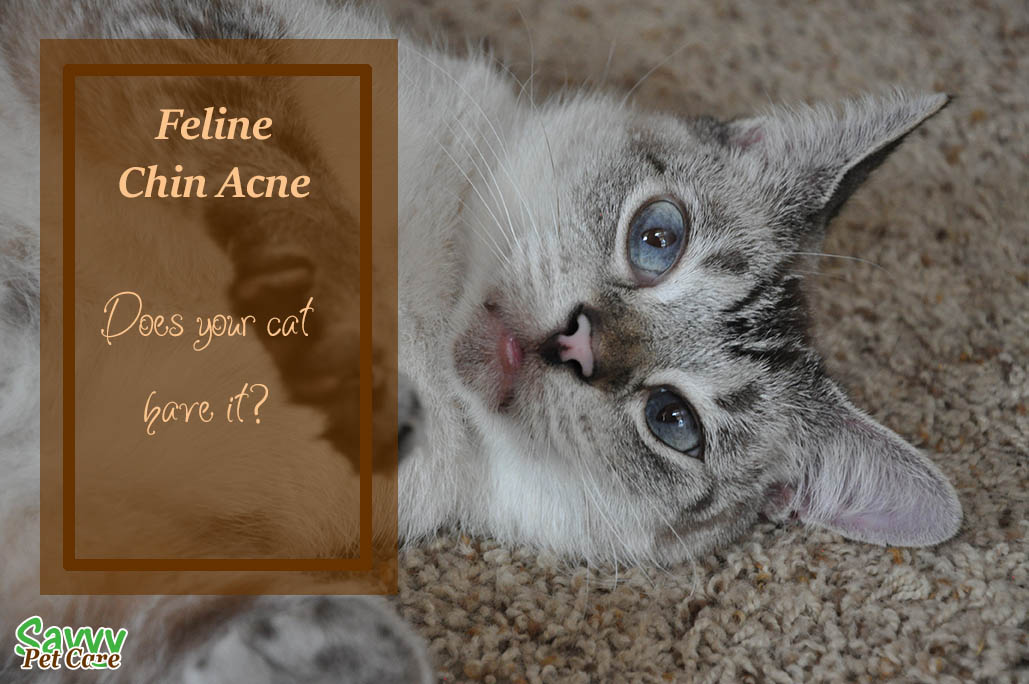When you marvel at a blind cat whizzing around the room,  avoiding all obstacles, you can give the cat’s whiskers the credit. Some people mistakenly think that cat whiskers are like human hair but this is not the case. Here are 12 interesting facts about whiskers.
avoiding all obstacles, you can give the cat’s whiskers the credit. Some people mistakenly think that cat whiskers are like human hair but this is not the case. Here are 12 interesting facts about whiskers.
Facts About Cat Whiskers
1. Whiskers are very sensitive
Have you ever noticed your cat quickly moving away from your hand if you bump its whiskers or turn its head if you try to stroke them? Whiskers, which are two to three times thicker than hair, are actually touch receptors. The follicles that hold these long, stiff hairs, called vibrissae, are deep with lots of nerve endings that send information to the cat’s brain.
2. There are whiskers on the muzzle
The whiskers found in horizontal rows on either side of the muzzle are called mystacial whiskers. There are usually 12 on each side but the number can vary. These whiskers are connected to muscles that allow the cat to move them.
 3. They are not just on the muzzle
3. They are not just on the muzzle
Most often, we think of whiskers on the muzzle, but that’s not the only place you’ll find them. Cats also have whiskers above the eyes, on the jaw and behind the front legs near the feet.
4. The whiskers on the legs
The whiskers on the front legs help cats when climbing and to position their prey for the killing bite.
5. Whiskers help the cat “see” in the dark
At the tips of the whiskers is an organ called a proprioceptor which sends signals to the brain and nervous system. This helps the cat know where every part of its body is. It can sense even small changes in air current, which is very helpful in the dark (feeling air flow change around furniture) or when chasing prey.
6. Whiskers let the cat know if it will fit
Do you ever cringe, like me, when you see a cat go into a tiny space, wondering if it will be able to get out? A cat’s whiskers are about as long as the cat is wide. This helps the cat know if it can fit through a narrow space. You might see a cat put its head through an opening several times before entering as it judges the size. Cats don’t have a true collar bone so they can twist around and fit in small spaces.
7. Whiskers help cats measure distance
Whiskers help a cat visually measure distance. This is how they are able to jump so gracefully on to a high ledge or precisely leap on prey.
8. They are an indicator of your cat’s mood
When a cat is angry or defensive, they will pull their whisker straight back against their face. When a cat is curious or on the hunt, they will be pushed slightly forward. Whiskers that are still and sticking straight out mean your cat is happy and relaxed.
9. The longest cat whiskers
The title for the longest whiskers in the world is currently held by Missi, a Maine coon from Finland who boasts 19 cm (7.5 ins) long whiskers and has held the record since 2005.
10. Unusual whiskers
Not all cats have long, straight whiskers. Some have long whiskers that curl in all directions. Some breeds, like the Devon Rex and the Cornish Rex, have very short, curly whiskers.
11. Don’t cut or trim your cat’s whiskers
No matter what your cat’s whiskers look like, don’t ever cut or trim them. They will fall out and grow back naturally, but cutting them will confuse and disorient your cat. It would be like blindfolding us or taking away our sense of touch.
12. Whisker stress or fatigue
Does your cat pull food out of its dish to eat? Does it only eat part of the food and still act hungry? It could be whisker stress. Since cats’ whiskers are so sensitive, it can be uncomfortable for them to eat from narrow dishes. The easy solution is to feed your cat from a wide, shallow dish.
Sources:
How Stuff Works: Why do cats have whiskers?
WebMD: Why do cats have whiskers?
mnn (Mother Nature Network): 13 things you didn’t know about cat whiskers
LiveScience: Why Do Cats Have Whiskers?
PetMD: Why Do Cats Have Whiskers?
PetMeds.com: Help your cat avoid “whisker stress”
Guinness World Records: Longest cat whiskers
Conclusion
Cat whiskers are more than just adorable—they’re essential to your cat’s health and happiness. From helping them navigate their surroundings to expressing emotions, these remarkable sensory tools play a vital role in your cat’s life. By understanding the importance of whiskers and respecting their sensitivity, you can strengthen your bond with your cat and ensure their well-being.
If you’re looking for ways to enrich your cat’s life and keep them engaged, consider interactive toys that complement their natural instincts. Check out this Cat Dancer toy—one of my favorites, and a hit with almost every cat I’ve given it to. Your cat will love it, and you’ll enjoy seeing them in action!
For more tips, fun facts, and product recommendations, be sure to subscribe to our newsletter and never miss an update. Your cat will thank you!



























Pingback: Have You Heard of Whisker Fatigue? - Christy Paws
Pingback: What's That on Your Chin, Ocean? - Feline Chin Acne